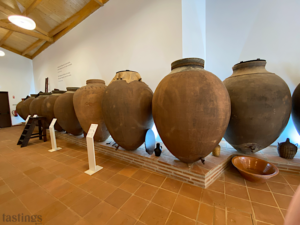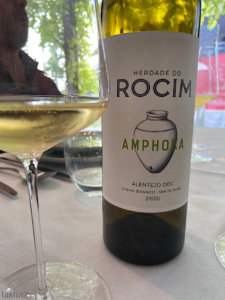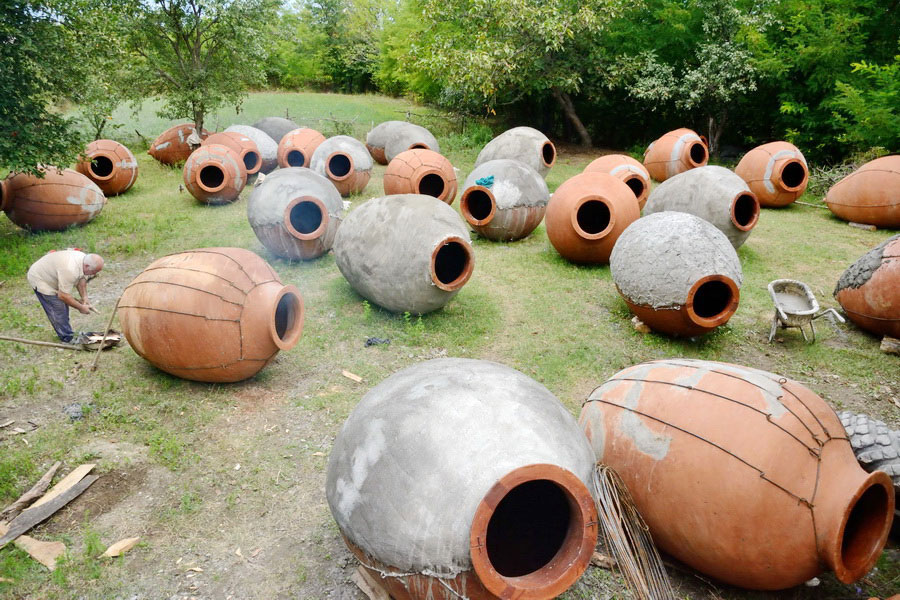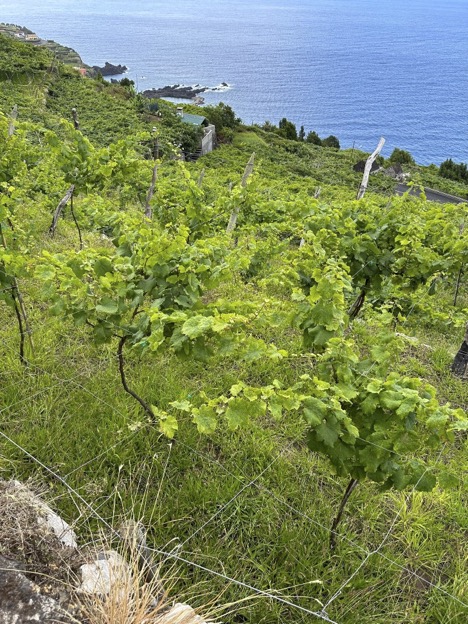Amphora wines, which date back thousands of years are being rediscovered and embraced by restaurants, winemakers, and passionate wine drinkers. “Everything old is new again.” says Aldo Zaninotto, Chicago restaurateur and wine expert, and the cycle of wine trends has returned to traditional wine making and native grape varietals.
Amphorae are large clay pots in which wine can be fermented and aged, with modern versions sometimes constructed from concrete. Georgians, the people living on the land along the Black Sea and between Russia and Turkey, are thought to have pioneered winemaking in amphora, also known as qvevri, approximately 8,000 years ago.

Today, winemakers in Georgia, and many other wine regions are carrying on – or re-invigorating — the practice as a way to showcase the purest expression of a wine, and offer wine lovers something new to discover and savor.
Amphorae are slightly oxygen porous containers that can allow tertiary flavors to develop in wines. As these wines age and are exposed to more oxygen in an amphora than in a wood barrel, tannins can be softened, and more intense flavors like mocha, berry compotes and nuts evolve. Because of the added oxygenation, wines aged in amphorae can also be ready to bottle sooner than wines in oak barrels. Plus – no oak means no flavor influences that can come from wood, such as vanilla, coffee, coconut, or dill.
As Zaninotto describes it, “An amphora is a neutral vehicle for the wine. It’s a very natural way to make wines. While winemakers can control and manipulate conditions in stainless steel and oak barrels, there is nothing to hide behind with amphora wines.”
At his Chicago restaurant Testaccio, Zaninotto has dedicated a section of the wine list to amphora wines titled “Ancestrale.” The current list includes wines by Cos in Sicily, Monastero in Lazio and Maradei in Calabria. Having sipped the Cos 2020 “Nero di Lupo” Nero d’Avola recently, I can attest to the silky texture and pure expression of the grape. The wine was like a more sophisticated expression of a young Nero d’Avola, with fine tannins and vivid black and red fruits accented with a subtle undercurrent of fresh earth.
Testaccio’s name even honors the mighty amphora, taking the name from the oldest trading post in Rome, where tradesmen would deposit used amphorae. That spot today is a giant hill composed of shards of those ancient amphorae.
But it’s not just Italy. The Alentejo region in Portugal, comprising 13% of Portugal’s wine production, has been a wine-producing region for more than 4,000 years and has consistently turned out wines fermented and aged in amphorae. There, they have a special word for the clay vessels – talha (pronounced “tall-ya”) and it’s worth noting that to use the word “talha” on the label, the wine must be made within the Alentejo DOC, if made outside of Alentejo the wines are simply called “amphora wine.”
The process for making these wines is simple: the grapes are crushed and then put into the amphorae where fermentation takes place. The amphorae are sometimes “sealed” with a layer of olive oil on top to keep out air, and then covered with an oilcloth cover. The porosity of the clay vessel allows slow, micro-oxygenation, resulting in wines with unique structure. Tannins are integrated resulting in a more silken feel on the palate, and fruit shines through in a purer expression.
Any wine fermented and/or aged in talha in Alentejo must remain in its vessel until Nov. 11 – St. Martin’s Day. Wine producers across Alentejo have even created an entire experience around Amphora Wine Day, with wineries offering first tastes of their talha wines on the first weekend following Nov. 11.

Pedro Ribeiro, general manager of Herdade do Rocim near Cuba, Portugal (an hour south of Évora) originated Amphora Wine Day in 2018 as a way to create new excitement about amphora wines. Today, it’s must-taste tourism for visitors from both near and far. “This region has so much potential to create world-class wines,” said Ribeira. “I want the world to know that Portugal – and The Alentejo – are making wines that can stand shoulder-to-shoulder with great wines from anywhere.”
Herdade do Rocim’s “Fresh from Amphora” line of wines and Amphora Tinto wines are two that are available in the U.S., to meet consumer demand for more natural styles of wine.
Amphora wines can also be found in California (there’s even a winery called Amphora in Healdsburg, using amphorae imported from Italy), Washington (Hoquetus in Walla Walla offers a Cabernet Franc aged in amphora) and Oregon (Beckham Estate Vineyards). Mexico also has embraced the trend, with Casa Pedro Domecq using amphora on several of their wines from the Valle de Guadalupe.
Wondering what makes these wines so interesting with modern producers and consumers spurred a dialog with wine educator, Veronica Hastings, who has been a fan of amphora wines for decades. “I think it’s really cool that so many wines today are being made in the original way from 8,000 years ago,” says Hastings. “I feel that the gentle oxidation that wines have in amphora translate to a silkiness on the palate for whites and rosés and a lushness on the palate for reds. I also perceive a liveliness – an energy, if you will – in amphora wines that makes them fun to drink.”

Retail wine shop owner Melissa Zeman stocks several amphora wines at her Chicago shop, Bottles Up!, noting they skew mostly Old World. “I think it’s important to offer amphora wines to get customers thinking about the winemaking process and teach them a little history,” she says. “The wines are complex, food-friendly, and tell a great story.”
Zeman also sees cross-over with the natural-wine movement. “Many amphora wines check of a lot of the boxes that natural-wine consumers are seeking, from unfined, and unfiltered, to no added sulfites and minimal intervention winemaking.”
As you consider your next wine list or retail shelf, why not seek out and add amphora wines for consideration? The great thing about wine is the endless opportunities to discover something new and delicious!
Liz Barrett is a Beverage Testing Institute wine judge, as well as wine writer, and educator who also blogs for whatsinthatbottle.com
For more information on the contributors check out their social media:
Testaccio @testaccio_chicago
COS @aziendaagricolacos
Herdade do Rocim @herdadedorocim
Casa Pedro Domecq @casadomecq
Bottles Up! @bottles_up_chicago





